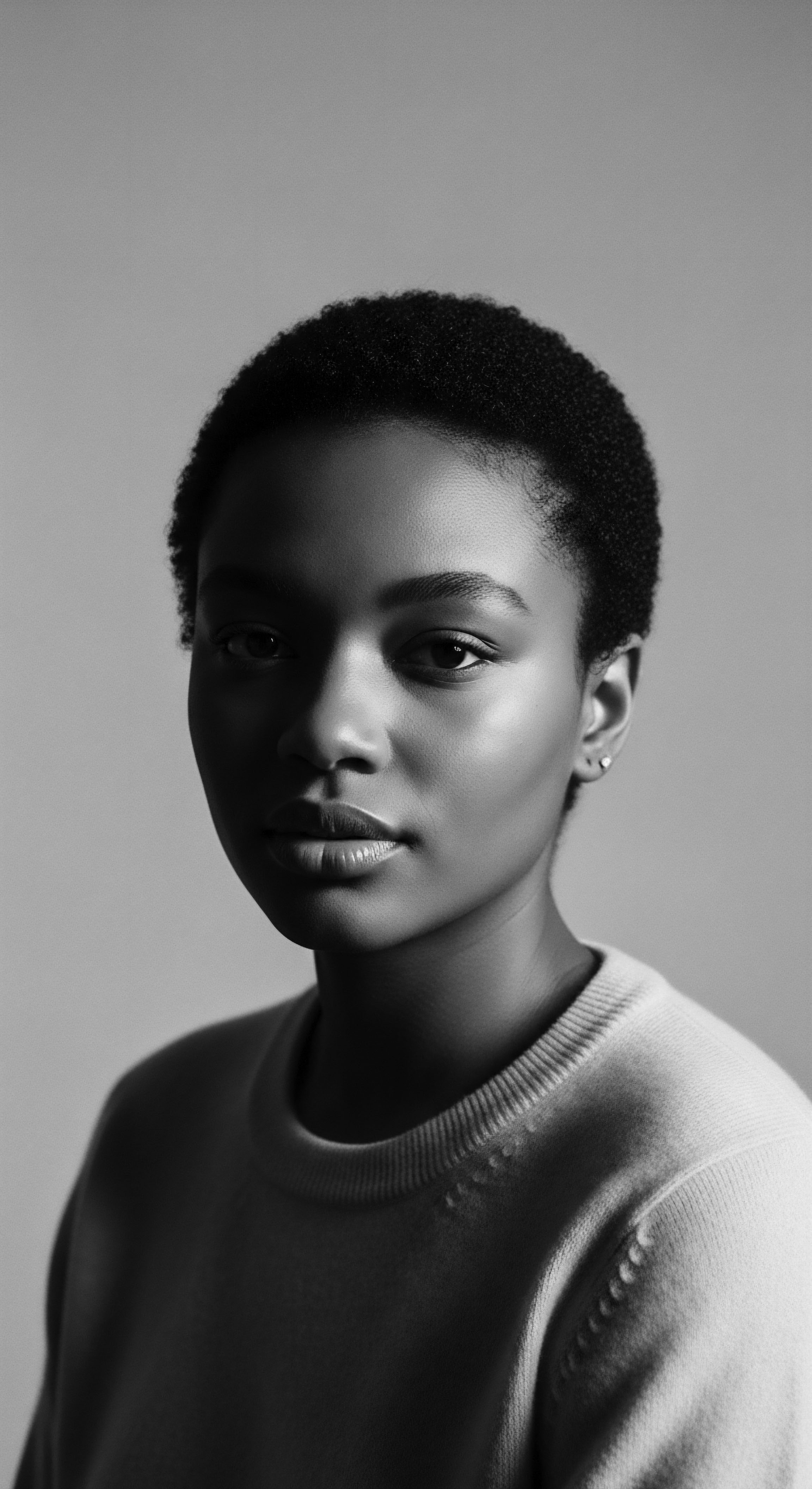
Fundamentals
The phrase “Wealth Significance” within the context of textured hair heritage offers a lens through which we may understand the profound, enduring value that extends beyond simple material accumulation. It speaks to a deep, inherent richness, a reservoir of collective strength and wisdom, passed down through generations. This is not about financial gain alone; rather, it relates to the manifold forms of capital—cultural, spiritual, social, and aesthetic—that textured hair represents and has consistently held for Black and mixed-race communities across time and geography. Its meaning, therefore, is rooted in the intrinsic worth and multifaceted contributions of textured hair to identity and survival.
To grasp this concept, one must shift perspective from conventional understandings of opulence to a recognition of ancestral abundance. Hair, for countless communities of African descent, has always served as a symbol of status, a marker of lineage, and a conduit for spiritual connection. This tradition-bound approach to hair care and adornment established systems of communal exchange, fostered intergenerational teaching, and preserved vital knowledge against attempts at erasure. Understanding Wealth Significance begins with acknowledging hair as a living archive, a dynamic testament to resilience.
Wealth Significance, in the lineage of textured hair, recognizes the inherent value and abundant capital embedded in ancestral practices, communal bonds, and the very biology of our strands.
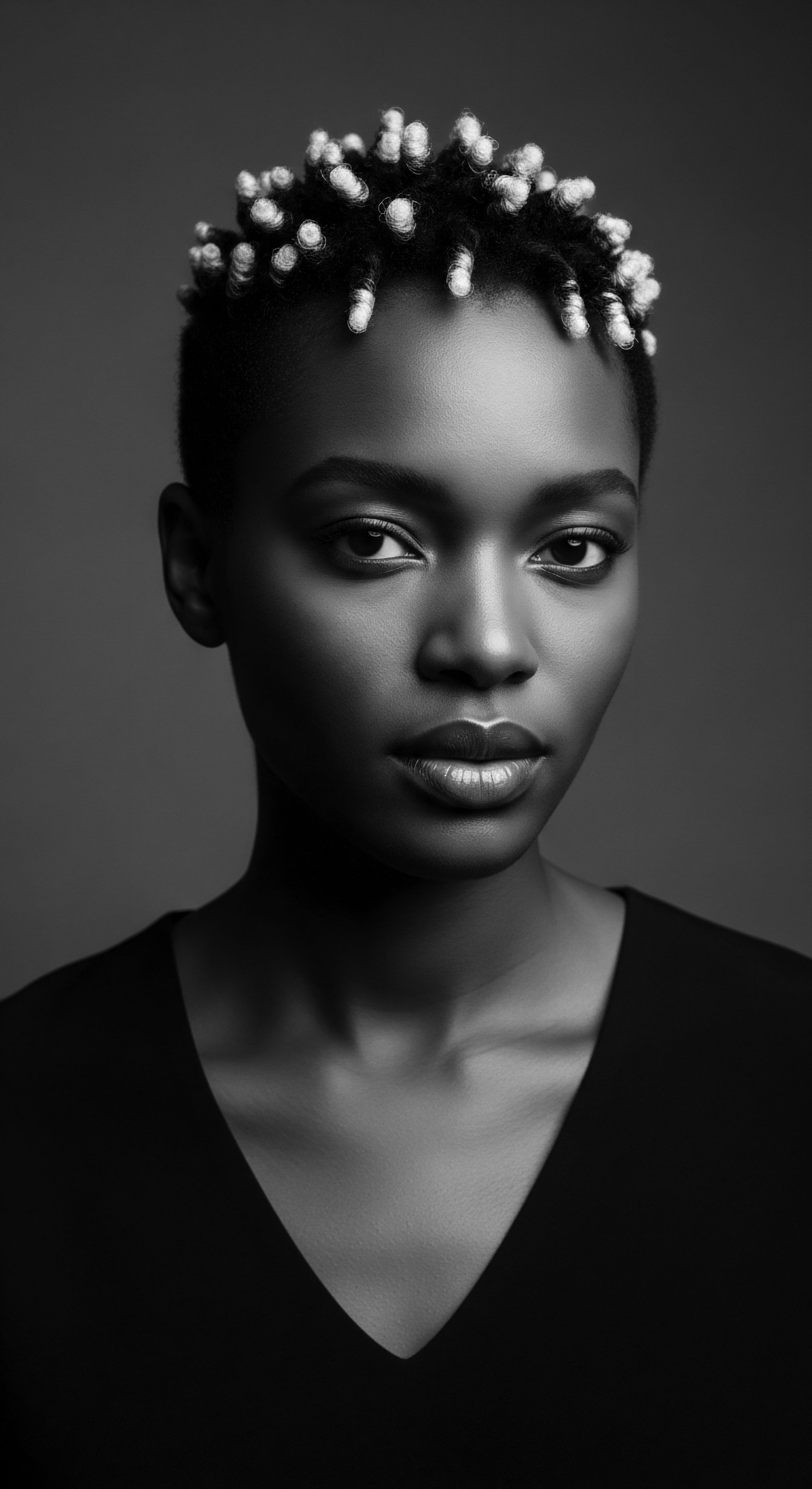
Echoes from the Source ❉ Hair as Elemental Biology and Ancient Practice
Our journey into Wealth Significance begins with the biological marvel that is textured hair. Each coil, kink, and curl arises from a unique follicular structure, exhibiting remarkable strength and resilience. This innate biological reality informed and shaped early ancestral practices, recognizing the hair’s inherent qualities for protection and expression.
Ancient African civilizations did not merely style hair; they engaged in practices that honored its unique characteristics, celebrating its diverse forms. These practices were often interwoven with elemental understanding, using natural ingredients derived from the earth and sun to cleanse, condition, and adorn.
In many pre-colonial African societies, hair care rituals were communal endeavors, serving as social gatherings where stories were shared, wisdom imparted, and bonds strengthened. The intimate act of braiding a child’s hair, for example, transmitted not only technique but also historical narratives and cultural values (Byrd & Tharps, 2001). Such interactions formed a vital part of the social fabric, contributing to a collective sense of well-being and belonging. The intricate patterns, head adornments, and specific styles often conveyed messages about a person’s age, marital status, ethnic identity, or social standing within their community.
- Adornment as Communication ❉ Ancient hairstyles acted as visual languages, transmitting social information and cultural belonging without spoken words.
- Communal Stewardship ❉ Hair care rituals were shared experiences, fostering intergenerational connection and reinforcing community ties.
- Spiritual Connection ❉ Hair was frequently seen as a conduit for spiritual energy, connecting individuals to divine beings and ancestral realms.
The very act of preserving and cultivating these diverse practices, often tailored to the specific needs of highly textured hair, represented a form of significant wealth. This wealth resided in the sustained knowledge of plant-based ingredients, the development of specialized tools, and the continuity of artistic expression that defied harsh environmental conditions and, later, profound systemic challenges. The ingenuity displayed in these early hair practices speaks to a deep connection to the natural world and an understanding of hair not as a mere accessory but as a vital part of the self and the collective.

Intermediate
Moving beyond the foundational understanding, the Wealth Significance of textured hair heritage expands to encompass its dynamic role in forging and preserving identity amidst the complexities of history. This concept gains heightened meaning when considering the forced migration and systemic oppression faced by African peoples, where hair traditions became potent symbols of cultural survival and self-determination. The ability to maintain aspects of ancestral hair practices, even in the most hostile environments, represented a profound form of resistance and a testament to an unyielding spirit. This signifies a type of capital that was not easily confiscated, a reservoir of collective memory.
The evolution of hair care in the diaspora, from the ingenious adaptations during enslavement to the vibrant entrepreneurial spirit that emerged post-emancipation, speaks volumes about this enduring significance. Here, the meaning of Wealth Significance becomes intertwined with narratives of resilience and innovation. It acknowledges the historical agency of Black women and men who, despite immense adversity, nurtured sophisticated systems of care, developed unique products, and created communal spaces centered around hair.
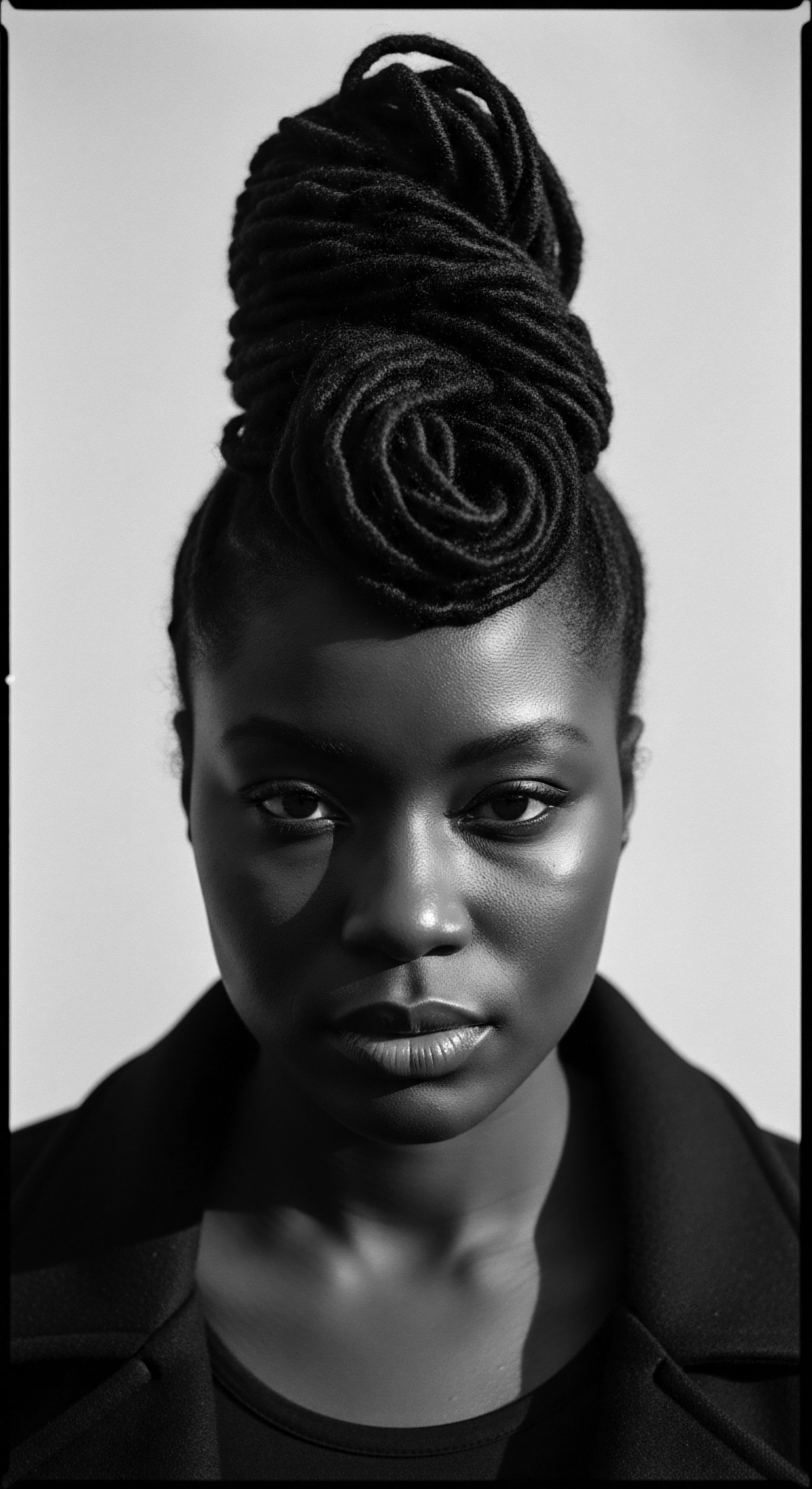
The Tender Thread ❉ Living Traditions of Care and Community
Across the African diaspora, the tender thread of hair care traditions persisted, adapting and evolving in new lands. During the brutal era of enslavement, enslaved Africans, forcibly stripped of many cultural markers, often found solace and continuity in their hair. Though resources were scarce and time constrained, they adapted traditional techniques, sometimes using rudimentary tools or materials like axle grease to manage their hair (Byrd & Tharps, 2001). This period saw the emergence of styles like cornrows, which became practical and protective, capable of lasting for days without extensive maintenance.
A powerful historical example of Wealth Significance in action centers on the profound ingenuity of enslaved peoples. Accounts from the era of chattel slavery in the Americas indicate that cornrows were employed not only for styling but as a means of clandestine communication and survival. Enslaved individuals would sometimes braid seeds or even grains of rice into their hair before forced migration, securing a vital food source for the unknown journeys ahead or for planting upon arrival in new, unfamiliar territories. More remarkably, and often less widely recognized, some historical narratives recount how intricate cornrow patterns could serve as encoded maps, delineating escape routes or detailing meeting points for those seeking freedom (Byrd & Tharps, 2001).
This practice illustrates a potent form of cultural wealth, where hair transformed from a mere physical attribute into a strategic tool for liberation, holding secrets and knowledge of survival in plain sight, hidden from oppressors who dismissed its significance. This quiet act of defiance, embedded within the strands, embodies a profound wealth of intellect, resourcefulness, and collective determination.
The post-emancipation era saw the flourishing of an indigenous Black hair care industry. Barbershops and beauty salons became central hubs of social and economic activity within Black communities, often thriving even during periods of broader economic hardship. These establishments transcended mere commercial spaces; they functioned as community centers, places for news exchange, political discourse, and mutual support. Pioneers like Annie Turnbo Malone and Madam C.J.
Walker built vast empires, not only offering products but also providing economic independence and training opportunities for thousands of Black women. Their contributions reveal the entrepreneurial acumen and collective desire for self-sufficiency that defined this period, further expanding the understanding of Wealth Significance to include economic agency rooted in cultural needs.
The enduring significance of hair within Black communities is also reflected in the ongoing natural hair movement. This contemporary movement, echoing earlier calls for “Black is beautiful,” celebrates the unadorned texture of Black and mixed-race hair. It champions self-acceptance and challenges Eurocentric beauty standards that historically devalued natural hair.
The return to ancestral practices, coupled with modern scientific understanding, allows for a more holistic approach to hair care, connecting personal well-being with a deep reverence for heritage. This embrace of textured hair, in all its forms, continues to serve as a powerful statement of identity and pride, affirming a legacy of intrinsic beauty and worth.
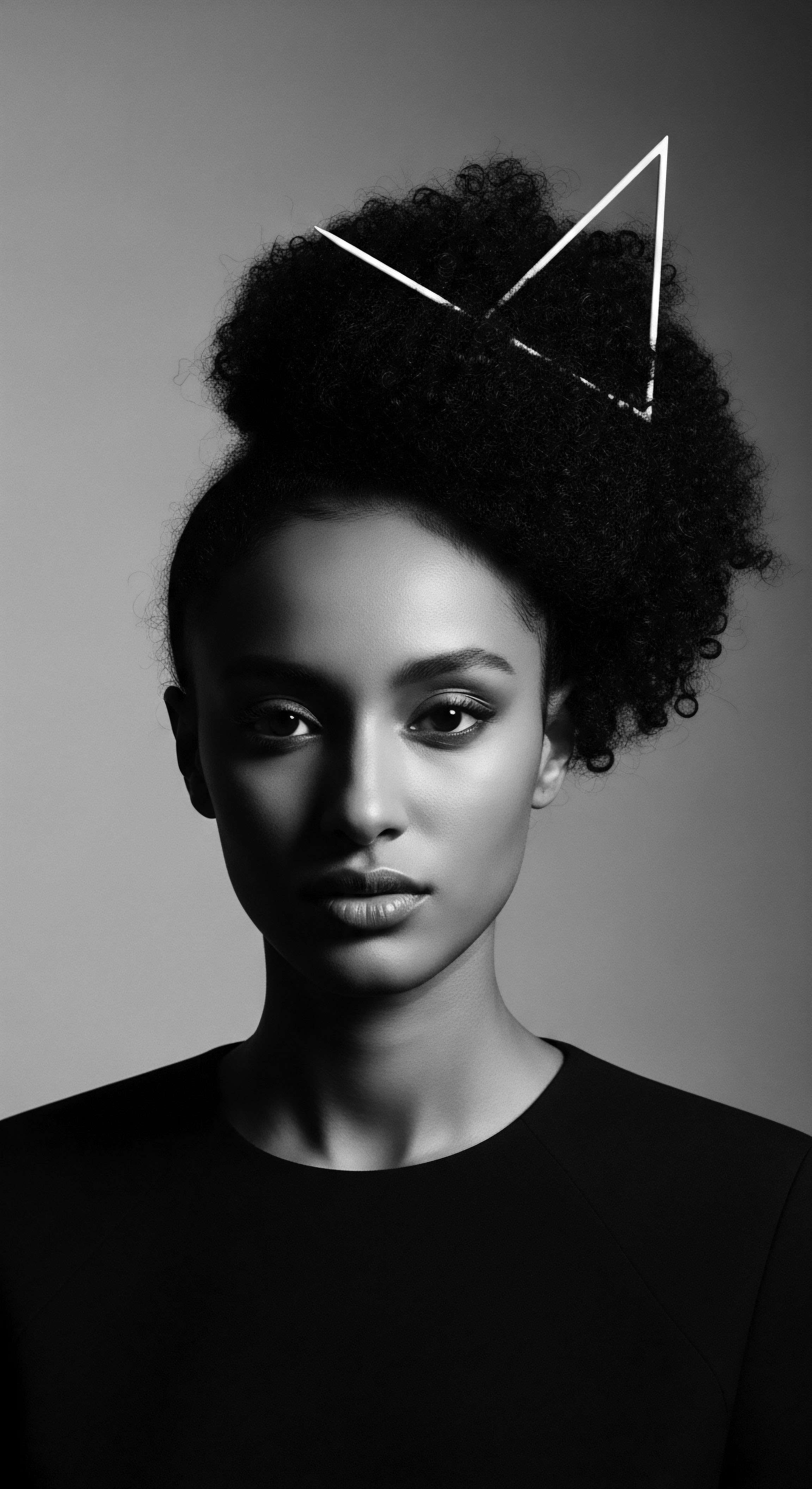
Academic
At an academic level, the Wealth Significance of textured hair is not merely a descriptive term; it presents a complex, multi-layered framework for understanding the profound cultural, social, and economic capital inherent in Black and mixed-race hair heritage. This concept transcends conventional notions of wealth, delving into the accumulated intergenerational knowledge, symbolic power, and resilient adaptive strategies that have been cultivated around textured hair. It compels us to recognize hair as a site of profound historical contestation, ongoing identity construction, and collective self-determination, often in defiance of dominant societal norms. The significance here rests on its capacity to delineate and preserve a distinct cultural identity, acting as a dynamic, living archive of lived experiences and ancestral wisdom.
From a scholarly perspective, Wealth Significance can be understood through the lens of Bourdieu’s theory of capital, particularly as extended by critical race theory scholars like Tara Yosso. While Bourdieu initially conceptualized cultural capital as knowledge, skills, and abilities valued by privileged groups, Yosso introduces the concept of “community cultural wealth,” which recognizes various forms of capital nurtured within communities of color, including aspirational, navigational, social, linguistic, familial, and resistant capital. Textured hair traditions, then, represent a tangible manifestation of this community cultural wealth. They embody knowledge systems passed down through familial and communal networks (familial capital), the ability to navigate hostile environments through culturally specific practices (navigational and resistant capital), and the communal bonds forged through shared grooming rituals (social capital).
The hair itself, with its unique biological structure, forms the elemental basis of this wealth. Its diverse curl patterns, ranging from loose waves to tight coils, offer a spectrum of aesthetic possibilities, demanding specialized care that fosters a deep, tactile relationship with one’s own body. This intimate connection fosters a distinct body of knowledge related to cleansing, conditioning, and styling that has been refined over millennia. Scientifically, understanding the specific cuticle structure, elasticity, and hydration needs of textured hair allows for a more informed and respectful approach to its care, often validating the efficacy of long-held traditional practices.
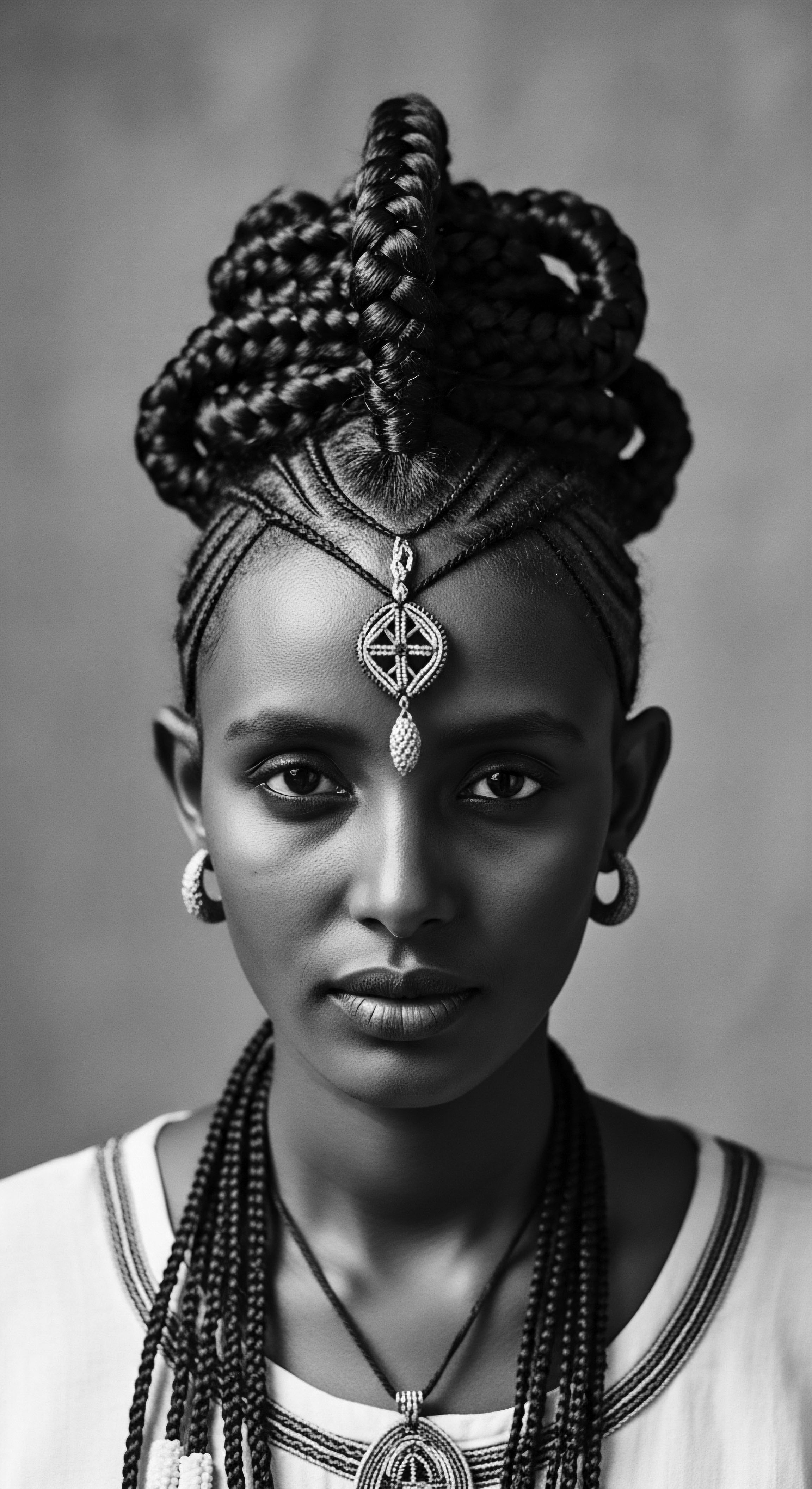
The Unbound Helix ❉ Voicing Identity and Shaping Futures
The journey of textured hair through history is a compelling testament to its role in voicing identity and shaping futures. In pre-colonial African societies, hairstyles often served as sophisticated indicators of social standing, marital status, age, or tribal affiliation. This intricate system of visual communication reflected a collective understanding of hair as a profound marker of individual and communal identity.
As African people were forcibly dispersed across the globe, these traditions endured, albeit transformed by new realities. Hair became a silent language of survival and resistance, a way to maintain connections to a forcibly severed past.
The advent of chattel slavery in the Americas necessitated adaptive strategies for hair care, given the harsh conditions and lack of customary tools. Yet, even in bondage, the significance of hair persisted. It served as a covert means of communication, with braids sometimes concealing messages, seeds, or even maps for escape. (Byrd & Tharps, 2001) This transformative capacity of hair—from a physical attribute to a strategic instrument of liberation—represents a powerful dimension of its Wealth Significance, demonstrating its utility as a repository of knowledge and a medium for organized resistance.
Post-slavery, the burgeoning Black hair care industry became a formidable economic force. Entrepreneurs like Annie Turnbo Malone and Madam C.J. Walker established vast networks of product distribution and beauty schools, creating unprecedented opportunities for economic independence within Black communities. These enterprises were not merely commercial ventures; they were social and political institutions that affirmed Black beauty and fostered communal solidarity.
Beauty salons and barbershops became vital spaces where communal ties strengthened, information exchanged, and collective identity reinforced, often serving as crucial sites for social and political organization. The estimated market value of the Black hair care industry today, reaching billions of dollars, stands as a continuing testament to this economic self-determination rooted in cultural necessity.
The ongoing movement to embrace natural textured hair represents a modern reclamation of ancestral pride and a powerful statement of self-acceptance against historically imposed beauty norms.
The mid-20th century saw the rise of the “Black is Beautiful” movement, which championed natural hair textures as a symbol of racial pride and cultural affirmation. The Afro became a powerful visual statement of defiance against Eurocentric beauty standards that had long denigrated textured hair. This resurgence in natural styling underscored a deeper philosophical shift, asserting that inherent Black beauty possessed its own intrinsic value, independent of external validation. The ongoing natural hair movement continues this legacy, with individuals embracing their authentic textures and challenging systemic hair discrimination in schools and workplaces, a struggle that has led to legislative changes like the CROWN Act.
The Wealth Significance of textured hair, therefore, extends beyond its aesthetic appeal or economic impact. It encompasses the spiritual reverence for hair as a connection to ancestral realms, a conduit for divine energy, and a sacred extension of the self. This spiritual dimension infuses hair care practices with ritualistic meaning, transforming daily routines into acts of self-love, remembrance, and ancestral homage. The maintenance of hair, whether through traditional oiling practices, intricate braiding, or protective styling, becomes an intentional act of self-preservation and cultural perpetuation.
| Dimension of Capital Familial Capital |
| Manifestation in Hair Heritage Intergenerational transmission of braiding techniques, hair care recipes, and stories within families. Children learning care rituals from elders. |
| Dimension of Capital Social Capital |
| Manifestation in Hair Heritage Hair salons and barbershops serving as community hubs, fostering networks, solidarity, and collective discourse. |
| Dimension of Capital Linguistic Capital |
| Manifestation in Hair Heritage Specialized vocabulary and communication forms specific to hair types, styling, and care within Black/mixed-race communities. |
| Dimension of Capital Aspirational Capital |
| Manifestation in Hair Heritage The drive to achieve self-definition and beauty standards rooted in ancestral ideals, despite systemic opposition. |
| Dimension of Capital Navigational Capital |
| Manifestation in Hair Heritage Ability to adapt traditional practices to new environments, whether through resourcefulness during slavery or innovation in modern product development. |
| Dimension of Capital Resistant Capital |
| Manifestation in Hair Heritage Hair styles as symbols of protest against oppressive beauty norms, asserting identity and defying discrimination. |
Ultimately, the academic investigation of Wealth Significance in textured hair reveals a profound interplay of biology, history, culture, and resistance. It illuminates how hair, a seemingly personal attribute, becomes a potent symbol of collective identity, a vessel for ancestral knowledge, and a dynamic force in shaping individual and communal destinies. The ongoing reclamation of natural hair textures and the renewed interest in traditional care practices signify a powerful assertion of this intrinsic wealth, ensuring that the legacy of textured hair continues to be celebrated, understood, and cherished for generations to come. This perspective allows us to view hair not just as strands, but as living embodiments of heritage and enduring strength.

Reflection on the Heritage of Wealth Significance
As we conclude this profound meditation, we recognize that the Wealth Significance inherent in textured hair heritage is a concept perpetually unfolding, a testament to the enduring spirit of Black and mixed-race communities. The very existence of our coils, kinks, and curls carries within it a deep ancestral story, a silent whisper of resilience across generations. Each strand holds the memory of ancient hands engaged in thoughtful rituals, the quiet strength found in communal grooming, and the unwavering resolve to assert identity in the face of immense challenge.
This understanding beckons us to view our hair not merely as a physical adornment, but as a living extension of our lineage, a sacred part of our being that connects us to the wisdom of those who came before. The journey from elemental biology to a powerful voice of identity is not linear; rather, it is a cyclical dance, a continuous return to the source to draw strength for the future. Our care practices, whether inherited directly or rediscovered through historical study, become acts of homage, nurturing not only the hair itself but also the spiritual and cultural well-being it represents.
The significance of this wealth lies in its inalienability; it cannot be truly seized or suppressed, only momentarily obscured. It persists through the generations, adapting, influencing, and continuously reminding us of an intrinsic value that transcends superficial beauty standards or transient societal trends. In a world that often seeks to homogenize, our textured hair stands as a vibrant, undeniable affirmation of heritage, a beacon of uniqueness and collective strength. It is a profound, continuing story, etched into every curl, of survival, beauty, and unwavering self-possession.
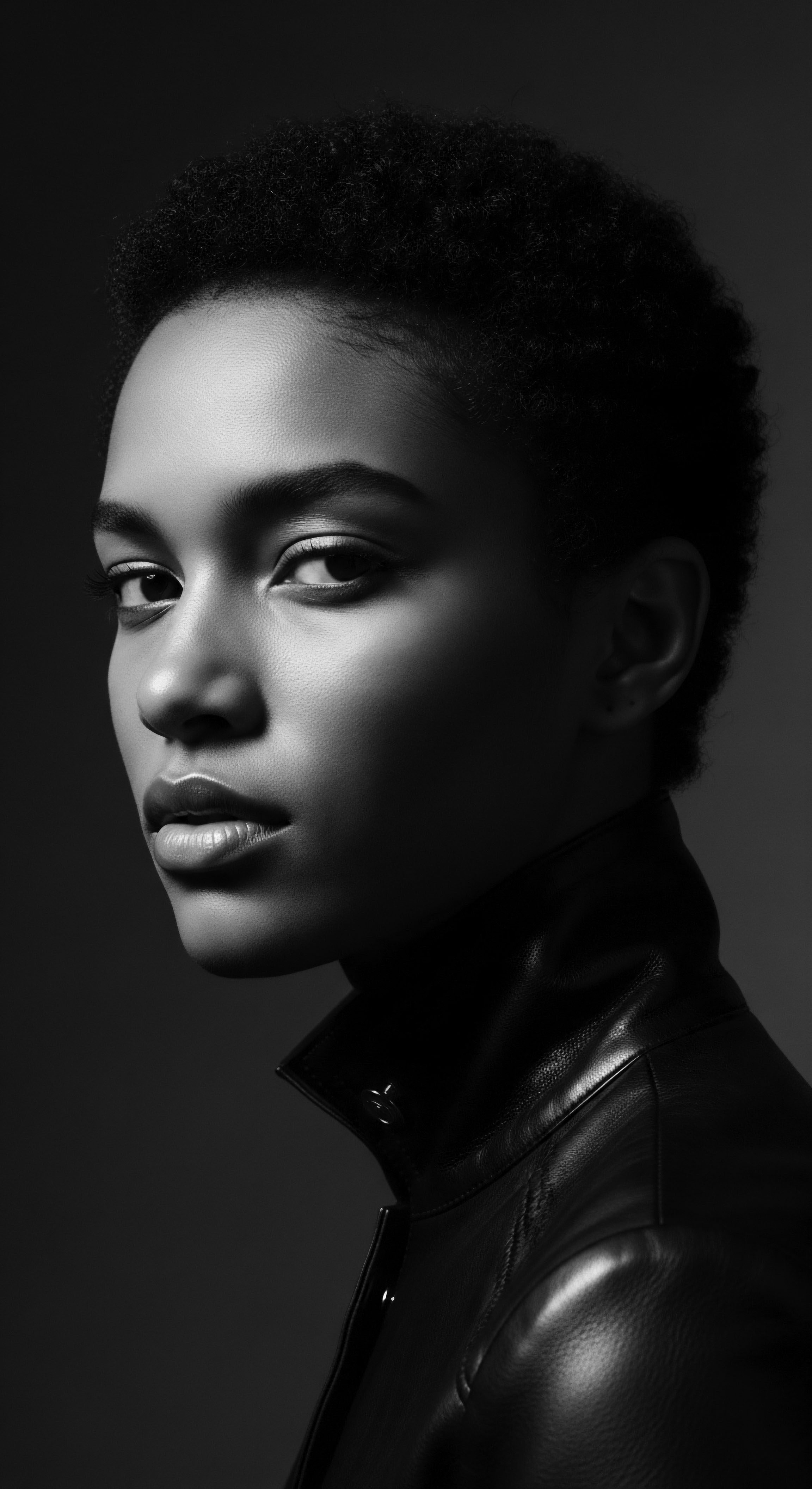
References
- Byrd, Ayana D. and Lori L. Tharps. Hair Story ❉ Untangling the Roots of Black Hair in America. St. Martin’s Press, 2001.
- Garrin, A. & Marcketti, S. B. The Impact of Hair on African American Women’s Collective Identity Formation. Clothing and Textiles Research Journal, 36(2), 2018, 104-118.
- Johnson, Stephanie A. and Darlene F. Bankhead. The importance of hair in the identity of Black people. Journal of Black Studies, 45(4), 2014, 335-351.
- Klimczuk, Andrzej. Cultural Capital. In M. K. Mills (Ed.), The SAGE Encyclopedia of Economics and Society. SAGE Publications, Inc. 2015.
- Patton, Tracey Owens. Hey Girl, Am I More Than My Hair? African American Women and Their Struggles with Beauty, Race, and Hair. Black Women, Gender & Family, 29(1), 2006, 85-99.
- Yosso, Tara J. Whose culture has capital? A critical race theory discussion of community cultural wealth. Race Ethnicity and Education, 8(1), 2005, 69-91.
